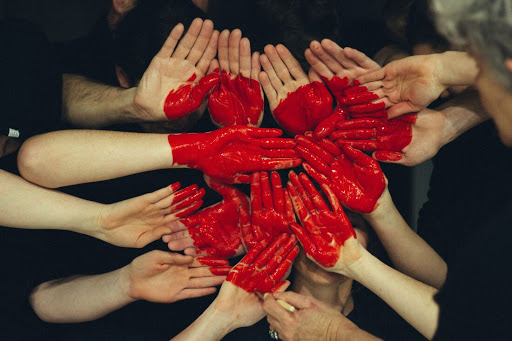
What’s drug synergy got to do with collaborative learning? The answer is that they are all about working together for the same purpose. Collaborative work creates synergism (potentiation). Synergism comes from the Greek word “synergos” meaning working together. According to the dictionary (Merriam-Webster) definition of synergism, it is “interaction of discrete agencies (such as industrial firms), agents (such as drugs), or conditions such that the total effect is greater than the sum of the individual effects.” One of the great advantages of the synergistic drugs is that drugs that exhibit synergy for a specific effect are usually not synergistic for side effects. Therefore, pathogens or tumors that do not respond to single treatments may be amenable to combined or synergistic drug treatments (Azmi et al, 2010).
The medical examples can also be applied to collaborative work in a group of students in an online course. Interestingly, results of a study (Upton and Adams, 2006) indicated that “those who had more of a deep approach to learning preferred the online module over other traditional forms of lectures”. Therefore, the outcome of collaborative work can be much greater than that of outcome from each student individually when each contributes with his/her familiar tools to the product (the completed task). The familiar tools are the richness and weakness of the individuals within the group in terms of having various skills and techniques (technology) different from each other but additive or synergistic when put together. The familiar tools can also be a case where some member of the group excel in contributing more to the product.
A synergistic effect may also be not beneficial or even harmful, if each component (group member) is not well-organized or is not worked in harmony. For example, some antibiotics should not be taken with milk because of reduced absorption of calcium and iron. This can also be a case among groups working together in a course. Chang and Brickman (2018) conducted a research on both high- and low-performance groups of an introductory biology course for nonscience majors and found that all groups of students complained about unequal contributions. In the same study (Chang and Brickman, 2018), the authors also found that lower-scoring students perceived group work as time-consuming “busy work” with little cognitive benefit.
Possible causes of failure in a synergistic effect of working together in groups of a course can be as lack of trust, imbalance of individual contribution, commitment imbalance, conflict in reaching consensus, and such. Lack of synergism ends up with life-threatening cases particularly in medical fields. The problems in this field might have the potential to cause severe injury or unexpected patient death in animals and humans (O’Daniel and Rosenstein, 2008). Group contracts in setting punishments for lack of participation and that other mechanisms may secure the effective group collaboration (Shimazoe and Aldrich, 2010). However, students usually do not rely on group contracts (Chang and Brickman, 2018). In addition, mistakes in some crucial procedures in health sciences cannot be compensated.
In order to have a good output of task, unlike the strict behaviors of drugs in medical field, group members in working together should work in harmony and contribute as much as they can with their heart. Trust and motivation of the group members are the key to the success.
References
Azmi AS, Wang Z, Philip PA, Mohammad RM, Sarkar FH. Proof of concept: network and systems biology approaches aid in the discovery of potent anticancer drug combinations. Mol Cancer Ther. 2010 Dec; 9(12):3137-44. DOI: 10.1158/1535-7163.MCT-10-0642
Upton, D., & Adams, S. (2006). Individual Differences in Online Learning. Psychology Learning & Teaching, 5(2), 141–145. DOI: 10.2304/plat.2005.5.2.141
O’Daniel M, Rosenstein AH. Professional Communication and Team Collaboration. In: Hughes RG, editor. Patient Safety and Quality: An Evidence-Based Handbook for Nurses. Rockville (MD): Agency for Healthcare Research and Quality (US); 2008 Apr. Chapter 33. Available from: https://www.ncbi.nlm.nih.gov/books/NBK2637/
Chang, Y., & Brickman, P. (2018). When Group Work Doesn’t Work: Insights from Students. CBE life sciences education, 17(3), ar42. https://doi.org/10.1187/cbe.17-09-0199
Shimazoe J., Aldrich H. (2010). Group work can be gratifying: Understanding and overcoming resistance to cooperative learning. College Teaching, (2), 52–57. https://doi.org/10.1080/87567550903418594